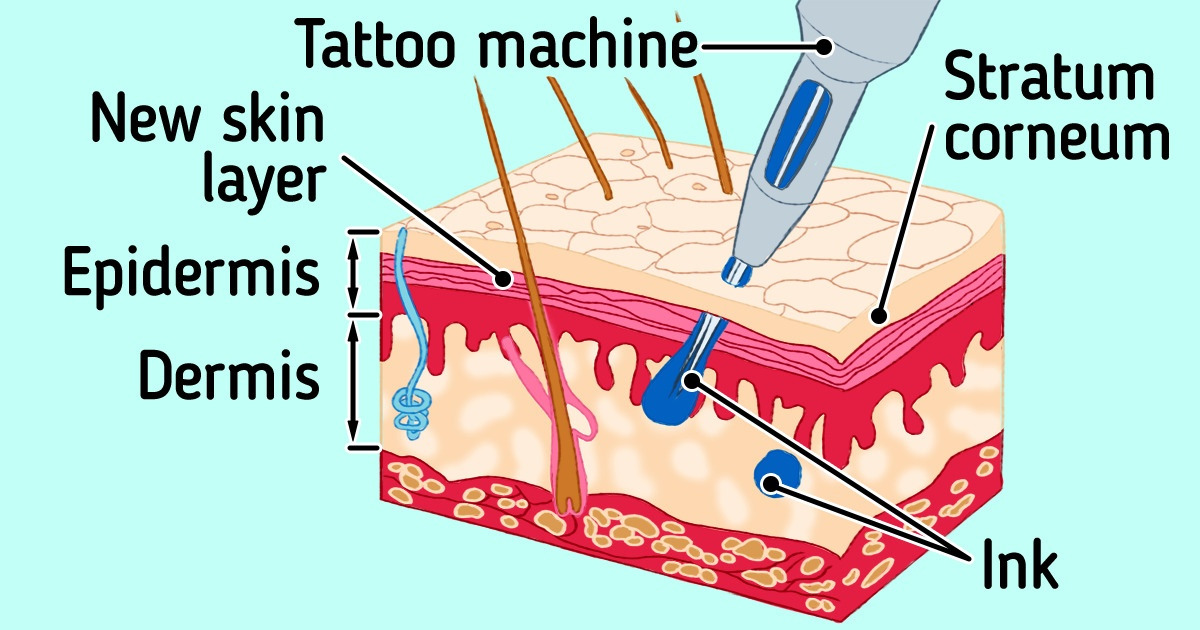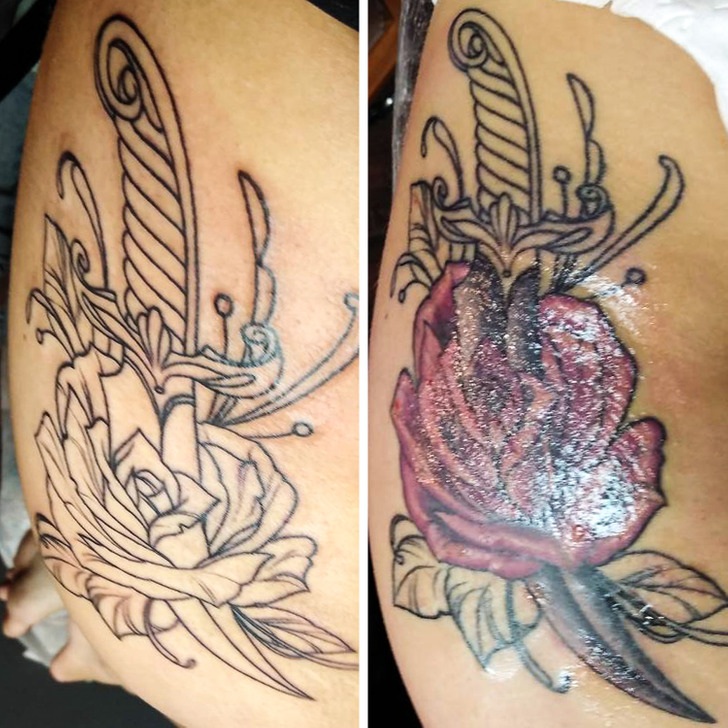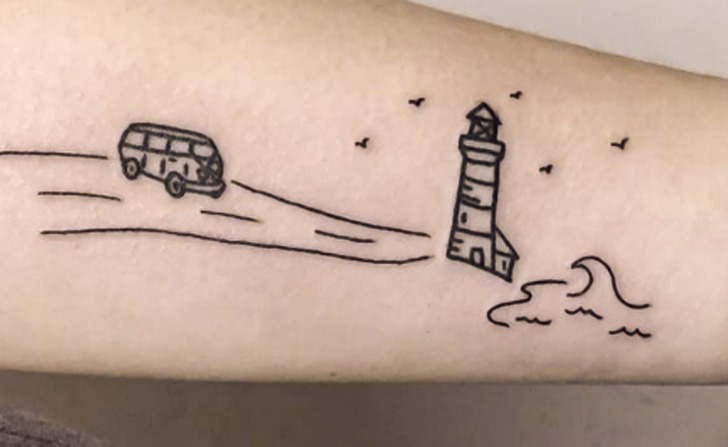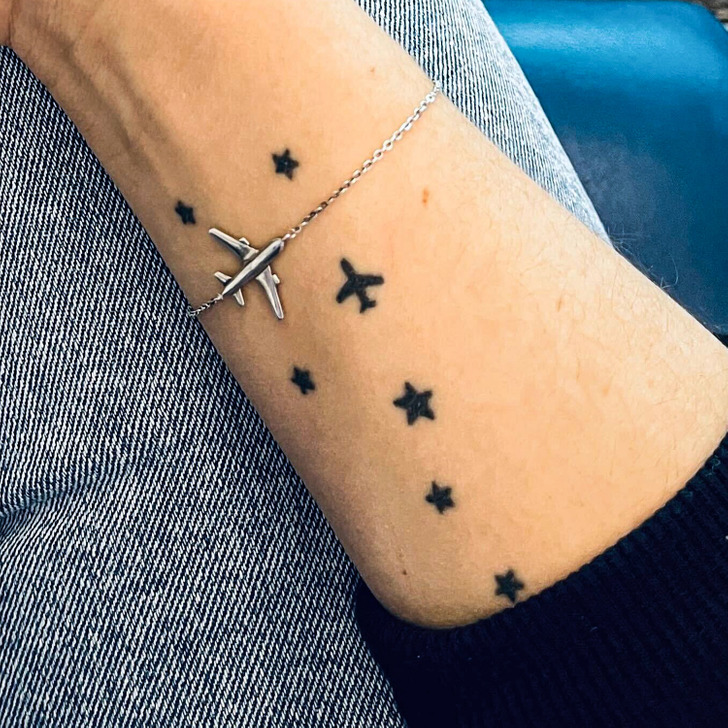
Why Tattoos Remain in the Skin, and How Safe They Are

Scientists found out that tattoos stay much deeper in the skin than we originally thought, and it not only becomes part of the skin but also part of the lymphatic system.
5-Minute Crafts found out why tattoos remain in the skin and if it’s safe to get them.
How a tattoo is made

In short, the process of making a tattoo can be described like this:
- A special tool with a needle is dipped in ink.
- The color pigment is injected into the dermis, around 1.5 to 2 mm deep.
- The needle pierces the skin 100 times per second.
- The ink gets into the papillary layer of the dermis, where it accumulates.
- The body reacts to the manipulations as if it’s a wound and activates the process of stopping the bleeding, so the skin puffs up.
- The immune protection starts working to neutralize the germs.
- All the damaged collagen restores, forming scar tissue.
- When the upper layer of the skin heals, the color pigment is trapped and remains inside the skin.
If the tattoos were made in the upper layers of the skin, they would disappear in about 3 weeks — this is how long a body needs to make new epidermis cells.
Over time, the tattoo becomes paler because the ink gets deeper into the dermis.
How deep the ink gets

Scientists found that after a tattoo is given, some parts of the ink leave the skin through the vessels and get into the lymphatic system of the body, and the nodes turn the same color as the ink. Also, parts of the red and black ink can stay in the liver. This is why one could say that tattoos don’t only decorate the body on the outside.
This discovery poses a question of how much the ink spreads throughout the body. A study with mice showed that 42 days after a tattoo was made, the amount of ink reduces by 32% (± 16%). So around 68% of the pigment was still there, which is why tattoos remain visible for a long time.
Also, exposure to simulated sunlight and laser light reduced the amount of ink in the skin.
What can go wrong

There are some concerns about the materials used in tattoos and their by-products that form when they are removed by a laser:
- A potential for phototoxicity
- Substance migration
- Conversion of tattoo ink ingredients into toxic substances
What the ink is made of

Most of the time, the ink used for tattoos is water-based, with isopropyl alcohol and a mix of small organic pigments. Blank ink is usually made from soot.
Ink might contain more harmful chemicals, such as polycyclic aromatic hydrocarbon that present certain risks to the health of your skin.
The pigments used in tattoos consist of nanoparticles that are usually smaller than 100 nm. Such particles have a very high level of chemical activity.
If a new tattoo causes itchiness, photosensitivity, and swelling, there’s a chance it’s a side effect due to the use of red and black pigments. Pain may also be caused by the fact that the spots that were pierced contain nerves and blood vessels. This is why the process of getting a tattoo is often painful.
Unfortunately, in most cases, the manufacturers of ink are not obliged to disclose the list of ingredients and exact chemical composition of their products.